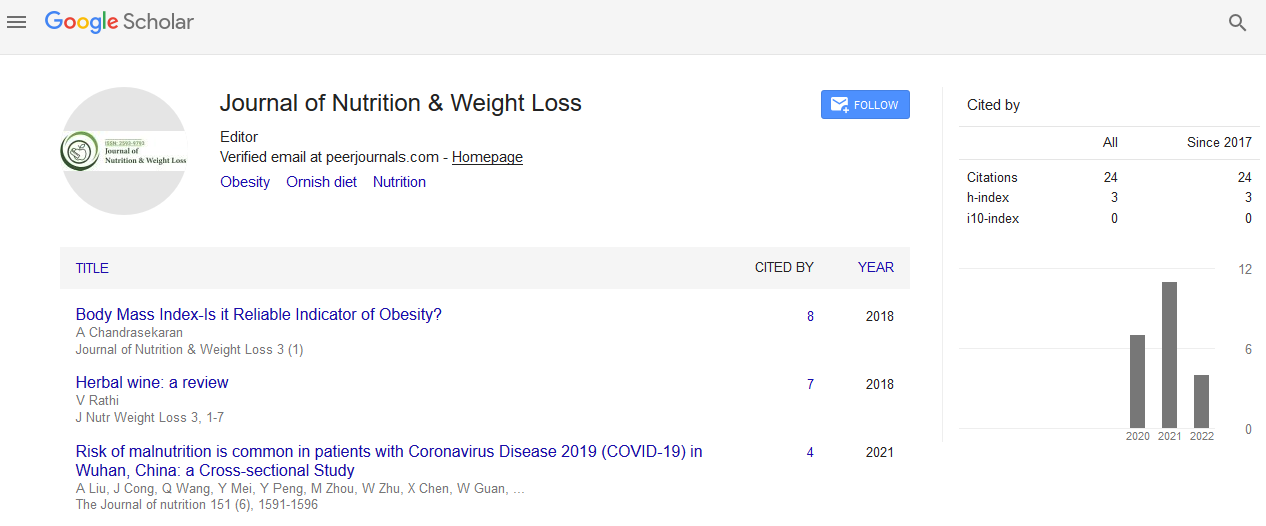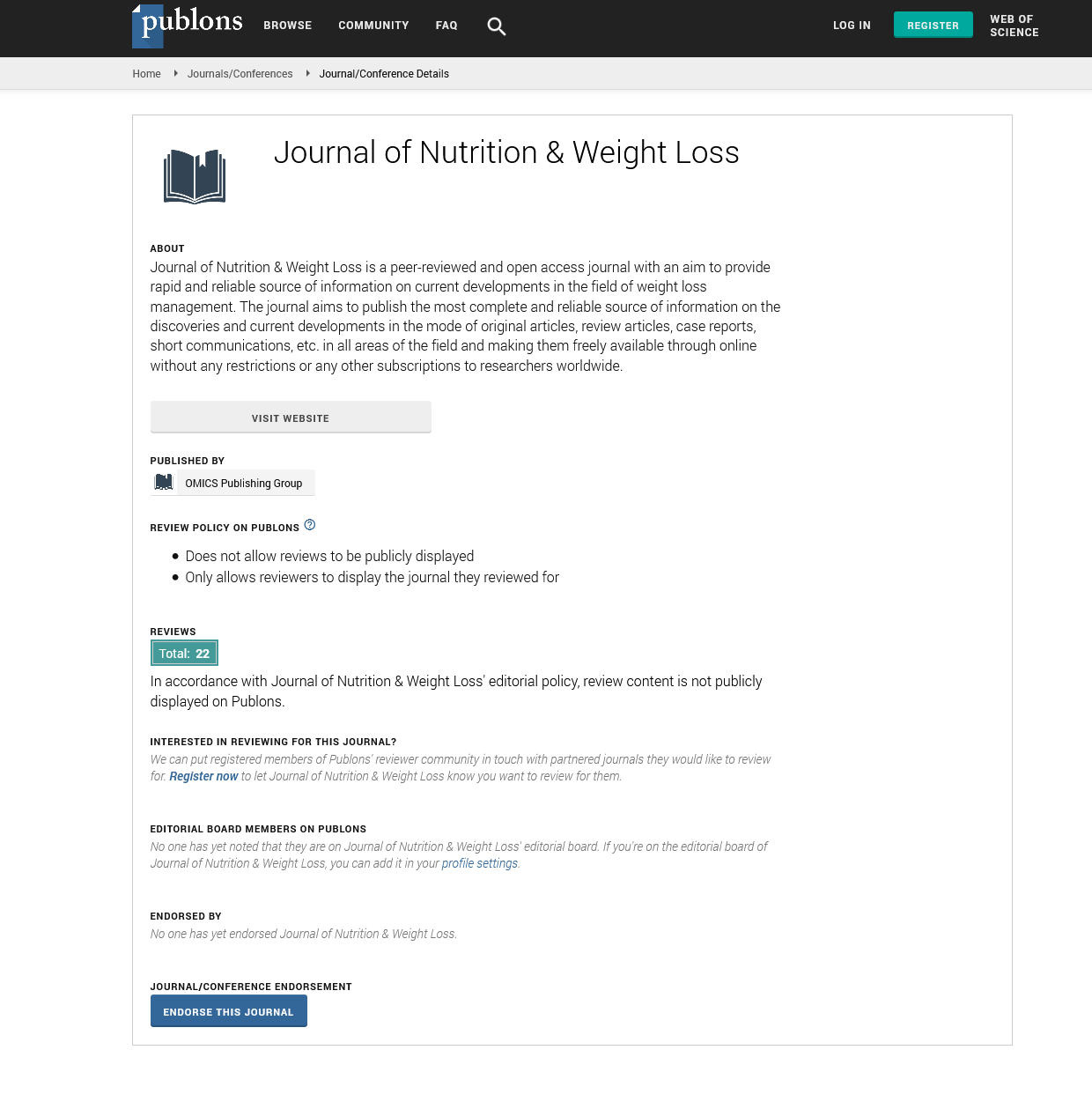Indexed In
- RefSeek
- Hamdard University
- EBSCO A-Z
- Publons
- Euro Pub
- Google Scholar
Useful Links
Share This Page
Journal Flyer

Open Access Journals
- Agri and Aquaculture
- Biochemistry
- Bioinformatics & Systems Biology
- Business & Management
- Chemistry
- Clinical Sciences
- Engineering
- Food & Nutrition
- General Science
- Genetics & Molecular Biology
- Immunology & Microbiology
- Medical Sciences
- Neuroscience & Psychology
- Nursing & Health Care
- Pharmaceutical Sciences
Perspective - (2024) Volume 9, Issue 1
Environmental Benefits of Nutrient Sensing in Animal Agriculture
Cheng Kyan*Received: 02-Mar-2024, Manuscript No. JNWL-24-26379; Editor assigned: 05-Mar-2024, Pre QC No. JNWL-24-26379 (PQ); Reviewed: 21-Mar-2024, QC No. JNWL-24-26379 (R); Revised: 27-Mar-2024, Manuscript No. JNWL-24-26379; Published: 05-Apr-2024, DOI: 10.35248/2593-9793.24.9.197
Description
Animal husbandry can benefit greatly from nutrient sensing since it can optimize animal feeds and cut waste. Conventional feeding practices frequently lead to excessive nutrient excretion, which contaminates streams and fuels dangerous algal blooms. Farmers can customize diets to meet the unique requirements of individual animals and guarantee that they receive the precise amount of nutrients needed for optimum health by employing nutrient sensing systems. By reducing the amount of excess nutrients expelled, this precision minimizes pollution to the environment. Furthermore, better nutrient use increases feed efficiency, which lowers feed consumption and resource use and eventually encourages more environmentally friendly and sustainable farming methods.
The rapidly evolving subject of nutrient sensing has the potential to completely change how we think about nutrition for aquaculture and land animals. The term "nutrient sensing" describes an organism's or cell's capacity to recognize and react to changes in nutrient levels, enabling them to preserve healthy metabolic processes and avert harmful health impacts. Through the use of nutrient sensing, we may enhance animal performance and health, strengthen animal resilience to disease, and lessen the negative effects of animal agriculture on the environment.
Nutrient sensing has the potential to optimize animal diets, which is one of its main advantages. Animal nutrition used to be mostly determined by trial and error and a basic knowledge of the dietary needs of various species. Even though this method has significantly improved animal nutrition, it is far from ideal. By better understanding how animals absorb and use nutrients, nutrient sensing can assist us in creating more specialized and efficient diets. For instance, by keeping an eye on each animal's nutritional state, we may modify their diets in real-time to make sure they are getting the proper quantity of each nutrient.
Nutrient sensing can enhance animal performance and health while also providing significant environmental advantages. The effects of animal dung on the environment are among the main problems facing animal husbandry. Animals fed improperly balanced diets excrete extra nutrients, which can contaminate nearby rivers and encourage the development of toxic algal blooms. We can lessen the quantity of extra nutrients that animals excrete by optimizing animal diets with nutrient sensing, which can help lessen the negative environmental effects of animal agriculture.
Nutrient sensing techniques in many forms are being developed and evaluated for application in aquaculture and land animal nutrition. Using sensors to keep an eye on each animal's nutritional condition is one of the most potential. These sensors can give real-time data on the animal's nutritional status and can be affixed to the skin or implanted into the body. The animal's diet can then be modified using this information to make sure it is getting the proper quantity of each vitamin. Using molecular techniques to track the expression of genes involved in nutrient metabolism is another method of nutrient sensing.
We can learn more about how animals absorb and use nutrients by examining how gene expression changes in response to alterations in nutrient availability. The development of more exact and successful diets can then be done using this knowledge. The use of probiotics and other supplements to alter an animal's nutrient-sensing pathways is also gaining popularity. Beneficial bacteria and other substances can be added to an animal's diet to help support optimal nutrient sensing and enhance metabolic processes.
This strategy is being intensively investigated for use in land animal and aquaculture nutrition as it has demonstrated potential in a variety of animal species. All things considered, nutritional sensing could revolutionize the way we think about animal feeding. We can create more accurate and efficient diets that enhance animal health and performance while lessening the environmental impact of animal agriculture by better understanding how animals absorb and use nutrients. Even though nutrient sensing and its uses in animal nutrition are still very new, the field is growing quickly and has a lot of potential for the future of animal agriculture.
Citation: Kyan C (2024) Environmental Benefits of Nutrient Sensing in Animal Agriculture. J Nutr Weight Loss. 9:197.
Copyright: © 2024 Kyan C. This is an open access article distributed under the terms of the Creative Commons Attribution License, which permits unrestricted use, distribution, and reproduction in any medium, provided the original author and source are credited.


